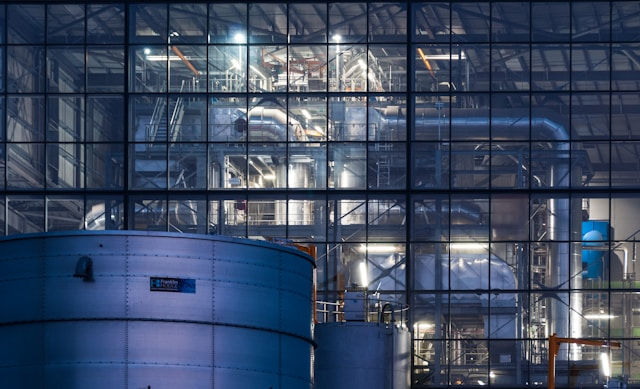CRM–ERP Integration: Driving Sustainability, ESG Reporting, and IIoT Readiness
- gregmalacane
- Sep 30
- 4 min read
Sustainability is no longer a nice-to-have — it’s a business mandate. ESG (Environmental, Social, and Governance) reporting has moved from being a compliance checkbox to a critical driver of investor trust, customer loyalty, and operational resilience. The challenge? Capturing accurate data across sprawling operations, supply chains, and customer interactions.
This is where CRM–ERP integration steps in. By connecting front-office customer insights with back-office operational data, manufacturers and industrial companies can create a single source of truth that fuels transparent ESG reporting and sets the stage for IIoT adoption.

Here are six ways CRM–ERP integration drives sustainability and ESG impact, with real-world style examples to illustrate each benefit.
1. Unified Data for Transparent ESG Reporting
Fragmented systems create fragmented stories. Companies often struggle to gather reliable ESG data because sustainability metrics are scattered across multiple platforms — carbon emissions in ERP systems, customer sentiment in CRM systems, and compliance checks in third-party systems.
CRM–ERP integration creates a unified reporting backbone, ensuring that operational KPIs (such as energy consumption, waste reduction, and logistics efficiency) align seamlessly with customer-facing commitments (like product lifecycle transparency and ethical sourcing).
Example: A global automotive supplier integrates Salesforce with Epicor. Now, when they issue ESG reports, carbon emissions from logistics are directly tied to customer orders, allowing them to show clients the exact footprint of each shipment. This transparency becomes a differentiator in winning contracts with sustainability-conscious OEMs.
2. Traceability Across the Supply Chain
Modern ESG standards require traceability — not just of financials, but also of environmental and ethical impacts across suppliers and products. CRM–ERP integration enables this by linking supplier ERP data with CRM platforms. This linkage enables businesses to track and share sustainability credentials across the product lifecycle, from raw material sourcing to after-sales service.
Example: An industrial electronics manufacturer integrates Salesforce CRM with Oracle ERP. They can now track whether raw materials come from certified ethical suppliers and surface this data in sales proposals. Customers receive ESG-compliant supply chain details in real time, boosting trust and strengthening supplier relationships.
3. Reduced Resource Waste Through Demand Forecasting
Overproduction and excess inventory are major sustainability drains. By aligning CRM’s demand pipeline with ERP’s production schedules, companies gain predictive insights that prevent wasted resources. This integration enables accurate demand forecasting, reducing unnecessary production runs, lowering energy consumption, and reducing CO₂ emissions from unsold or scrapped goods.
Example: Instead of running large speculative batches, a global chemical manufacturer connects its CRM opportunities to its ERP production planning, and it adjusts output to align with confirmed customer deals. The result: a 12% drop in raw material waste and a measurable reduction in energy usage per ton of product.
4. Smarter Logistics and Lower Emissions
Transportation is one of the largest contributors to corporate emissions. When CRM and ERP data are integrated, logistics planning becomes smarter — aligning shipment frequency, delivery routes, and consolidation strategies directly with customer orders and service expectations. This results in optimized logistics, which not only lowers costs but also cuts fuel consumption and emissions.
Example: A construction equipment company integrates Salesforce with Epicor. With visibility into customer delivery timelines and warehouse stock levels, they reduce partial shipments by 30%. Fewer trucks on the road means lower emissions — a fact they now highlight in their ESG reports to stakeholders.
5. Customer Engagement Around Sustainability Goals
Sustainability isn’t just internal — it’s also about engaging customers. With integrated systems, companies can provide customers with real-time sustainability insights as part of the sales or service experience. By showing customers the impact of their purchase decisions (e.g., reduced carbon footprint from consolidated shipping or eco-certified materials), companies position themselves as trusted ESG partners.
Example: A European packaging company utilizes an integrated CRM–ERP platform to provide customers with sustainability dashboards for their orders. Each order confirmation includes data on recycled materials used, carbon savings from optimized shipping, and compliance certifications. This has resulted in an 18% increase in customer retention through competitive bids.
6. Laying the Foundation for IIoT-Driven ESG Optimization
IIoT is the next frontier for ESG — sensors on equipment, real-time energy tracking, predictive maintenance, and automated carbon monitoring. But IIoT initiatives can only succeed if there is a unified data backbone. Integrating systems provided that backbone, ensuring that sensor data flows seamlessly into operational records and customer reporting systems. This enables predictive ESG insights and real-time accountability.
Example: A global steel producer integrates CRM and ERP, then layers IIoT sensors onto furnaces and logistics fleets. The unified system enables them to track energy usage per order and provide customers with real-time ESG dashboards. This not only satisfies regulators but also secures preferential financing from ESG-focused investors.
Want to Know More?
Sustainability and ESG reporting are not separate from core business systems — they are embedded within them. By integrating CRM and ERP, companies establish a single source of truth, which is essential for transparent reporting, informed decision-making, and genuine customer engagement.
And critically, this integration lays the foundation for IIoT adoption, where real-time data from machines, logistics, and energy systems can drive next-generation ESG strategies. Companies that take this step today aren’t just reporting on sustainability — they are building a sustainable future.







Comments